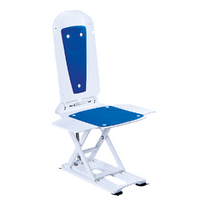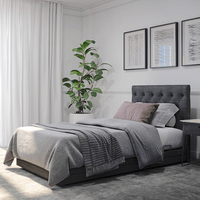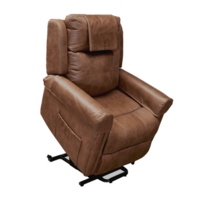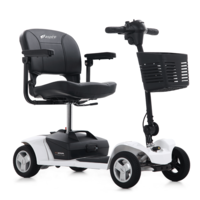The best mattress for a good night's sleep
Having the right mattress is so important for people with mobility issues. Not only for comfort, but also for maintaining your overall health and wellbeing.
But with so many options out there, how do you know where to start? Mattress shopping can be overwhelming, with different types of mattresses offering unique benefits, each suited to specific needs and preferences.
Below we explore three popular mattress options for people with mobility issues: spring, foam and alternating air. We’ll look at factors such as support, pressure relief, and ease of movement to help you make an informed decision.
“I want a comfortable mattress that will support me all night long.”
Spring mattress
Modern spring mattresses are generally made up of hundreds of spring coils contained within their own fabric sleeve (pocket springs) and arranged in weight activated support zones. The mattress is then topped with a pillow top layer for comfort.
The main benefits of spring mattresses are:
- Firmness: The coil structure of spring mattresses provides robust support where it’s needed, which can be beneficial for people with mobility challenges. Spring mattresses also help maintain proper spinal alignment and reduce discomfort or pain.
Integrated side-walls provide resistance from rolling and a firm ledge to aid getting in and out of bed.
- Bounce and responsiveness: Spring mattresses offer a natural bounce that facilitates movement and easy repositioning. This is particularly helpful for people who may change position frequently in the night.
- Cool feel: The open structure of spring mattresses promotes airflow. This can help regulate body temperature, ensuring a more comfortable sleep.
This: Aspire ComfiMotion Pocket Spring Mattress
“I want a mattress that adjusts to my body to relieve joint pain.”
Foam mattress
Foam mattresses, including memory foam and latex foam, have become more popular in recent years because of their ability to contour to the body and deliver a comfortable night’s sleep.
Modern foam mattresses are usually made up of two or more layers of specialised foam, including a softer foam for comfort and a firmer foam to provide support.
The main benefits of foam mattresses are:
- Pressure relief: Foam mattresses excel at distributing body weight evenly. This helps to reduce pressure on joints and relieve discomfort associated with muscle stiffness. This can be particularly beneficial for individuals with conditions like arthritis or fibromyalgia.
- Motion isolation: The dense nature of foam mattresses helps to absorb movement. This feature can minimise disturbances caused by a partner’s movement throughout the night. It can also reduce the frequency of waking up oneself as a result of unintended movement during sleep.
- Customised support: Memory foam mattresses are designed to adapt to the sleeper’s shape. This ability to conform to individual contours can help alleviate strain and provide targeted support where it’s needed. Reinforced sidewalls can also help with getting into and out of bed
This: Aspire ComfiMotion Memory Foam Mattress
“I need a mattress designed for pressure care and support.”
Alternating air mattress
Alternating air mattresses are intended for sleepers who may be at risk of pressure injuries. Using a series of air chambers, adjustable air mattresses provide continuous movement at the surface level, which encourages blood flow and aids pressure redistribution.
The benefits of alternating air mattresses for people with mobility issues include:
- Customised support: The appropriate air pressure can be adjusted to the sleepers’ weight and size. This feature allows the mattress to deliver the right balance of comfort and support, while minimising pressure.
- Continuous air flow: The inflatable chambers mean air is constantly being recirculated around the mattress. This helps to reduce moisture and provide an improved microclimate environment and a cooler sleep surface.
- Mattress overlay or replacement: Options include a topper for your existing bed or a complete mattress replacement. This allows you to choose an alternating air mattress to suit your particular care needs.
Because air mattresses deflate, they’re relatively portable. This makes short-term hire or temporary use much more possible, and allows you to take the mattress with you if you stay somewhere new.
This: Aspire ACTIVE AIR 4 Mattress Overlay
Mattress choice very often comes down to individual needs, including level of support, pressure relief, ease of movement and personal preference. It’s also important to consider the type of bed base you’ll be using as not all mattresses are compatible with all beds.
It’s not necessarily an easy decision and there can be a lot of factors to consider. If you’re not sure or need some guidance, speak with a healthcare professional about what might suit your situation.
Mobility HQ offer an extensive range of mattresses for people with mobility issues or additional healthcare requirements. Our friendly team are happy to help find the right mattress for you.



























